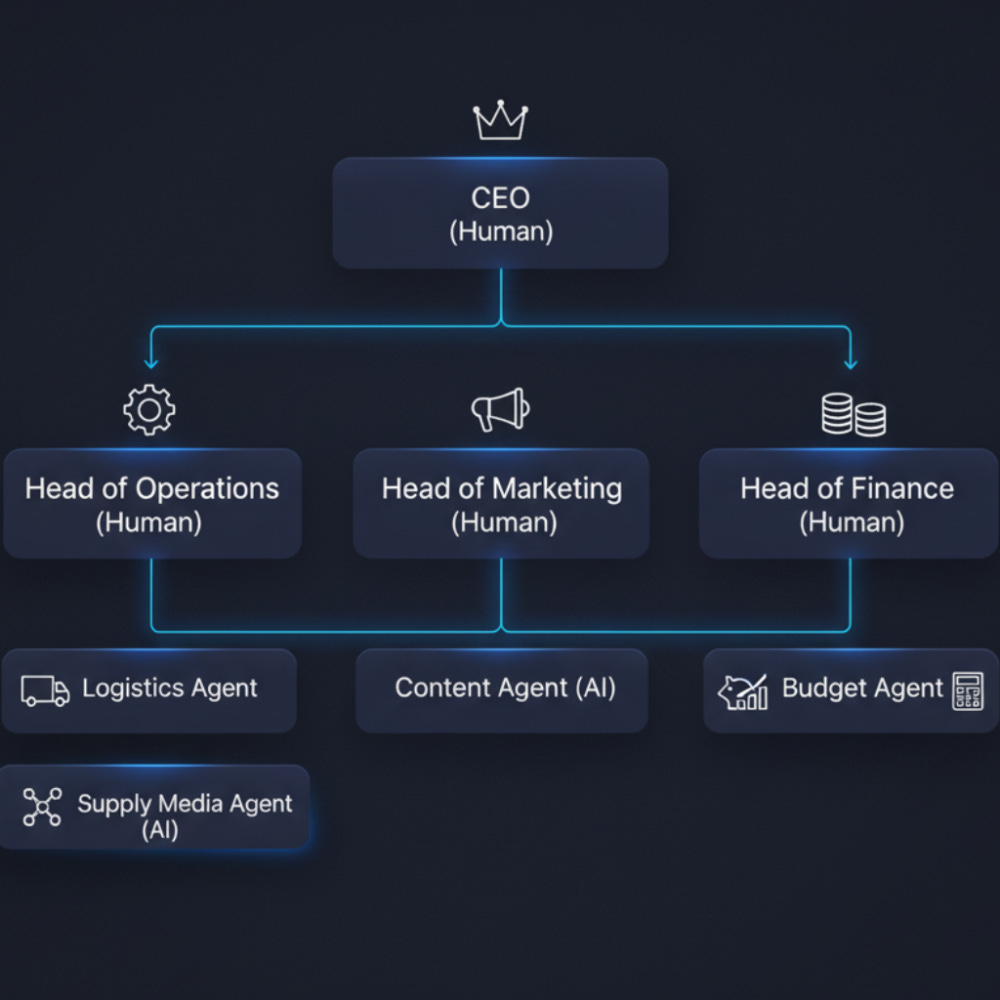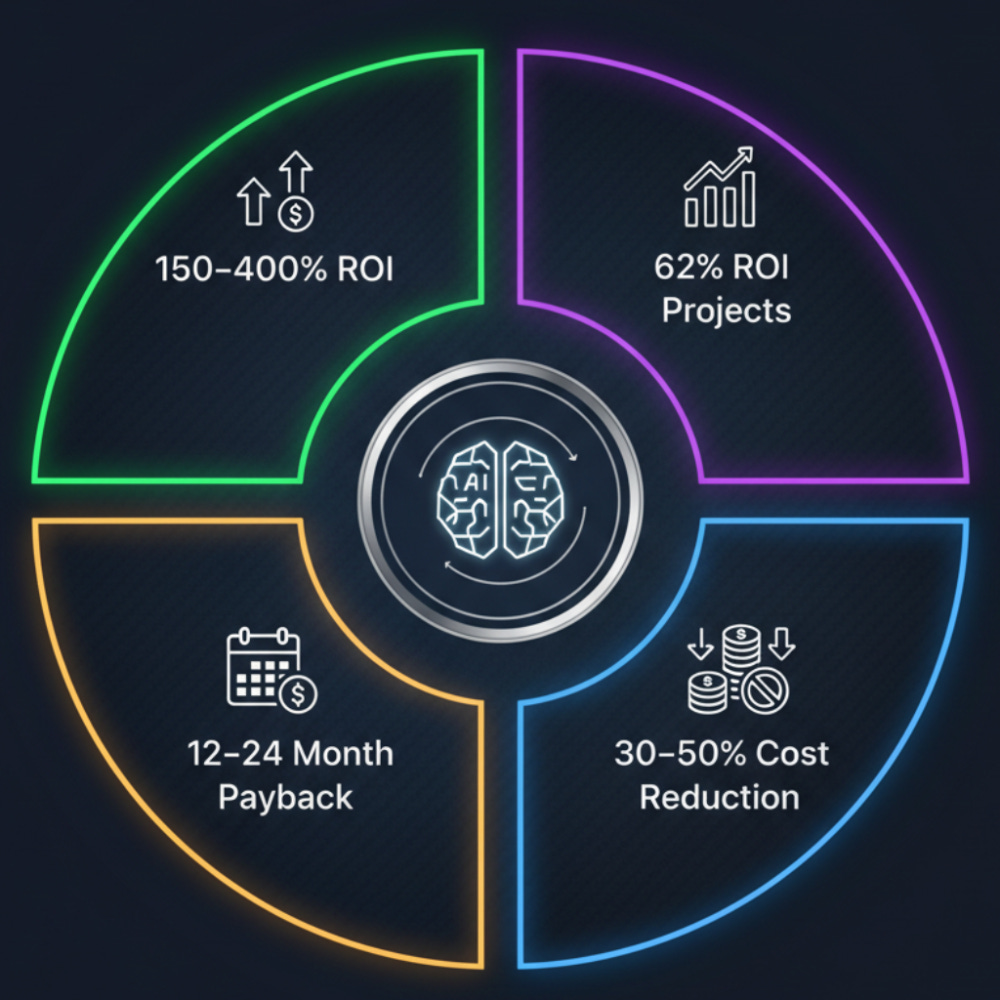The Org Structure Is About to Be Turned on Its Head. Plus: Your Weekly AI News & Tools Digest
Moving From Leading People to People and AGENTS
Human/AI Teams: The Hybrid Workforce Reality
Imagine hiring someone who never calls in sick, works through the night, doesn’t get distracted, and gets better every week. Imagine the business value that would drive.
Not sci-fi. Not next year. Now.
Across Australia, 66% of organisations have already started recruiting their first AI agents, digital employees that work alongside human teams. While some businesses still debate whether AI is ready, the majority are already building hybrid workforces.
Meet AI agents, they are employees, just digital ones. And the recruitment drive is accelerating.
The Critical Distinction You Need to Understand
Let’s draw a clean line. You’ve used ChatGPT or something like it. Handy for writing an email, summarising a report, tidying notes. That’s a language model - a clever talker. You ask; it answers.
An agent is different.
A language model is a brain in a jar. An agent bolts a body onto that brain. It remembers what it did yesterday, talks to your systems, and takes action in the real world.
You say, “Book that flight.” The agent finds the fare, books it, updates your ERP, emails the traveller, logs the expense, and learns for next time (never fly Jetstar)
It’s a digital employee with a job description and the ability to actually get things done whilst you’re in meetings. You name it an Agent can probably do it.
Remember this - Language models chat. Agents work.
From Chat to Work (and the Rise of Zero‑FTE Departments)
Organisations still shuffle spreadsheets and emails between departments whilst innovative leaders are now quietly standing up “zero‑FTE departments”: whole functions run by coordinated agents under human oversight. These aren’t replacing humans outright - they compress the hand offs and hand humans the exceptions.
Agent management is a new skill every leader needs. The organisation chart is about to be turned on its head.
Unlike managing humans (feedback cycles in weeks), agent management needs continuous optimisation. The most effective AI managers can oversee 10–15 agents simultaneously, each handling defined workflows.
The best implementations don’t replace humans, they orchestrate human + AI teams.
Telstra: Cut service ticket resolution from 45 minutes to 4 minutes
Commonwealth Bank: Fraud detection that used to take 2 days now happens in 3 hours
Bupa Health: Personalised care plans generated overnight instead of next week
Sydney Airport: Passenger queries handled by agents that know your flight history
The Iconic: Shopping recommendations that actually understand what you bought last season
Same industries. Same pressures. Different approach to getting work done.
Your new frontline leaders will be part process owner, part air‑traffic controller.
The Numbers (September 2025 Context)
Forget the “$150K minimum” crap. You can test this properly for under $700.
Think of it like hiring, different roles need different capabilities:
Graduate level ($70-$420/month): Tools like Zapier, n8n, Lindy. Handle routine tasks - data entry, basic reporting, email sequences. Good for testing the concept.
Mid-level hire ($7K-$35K setup): Custom integration with your CRM, ERP, finance systems. This is where most medium enterprises see real ROI. Handles complex workflows but needs proper setup.
Senior executive ($105K-$700K): Full enterprise deployment through Microsoft, Salesforce, ServiceNow. Multiple agents coordinating across departments. Only worth it at scale.
What You’re Actually Buying
What is this thing you’re evaluating?
It’s software that does a job from start to finish.
Take quarterly reporting. Usually: analyst pulls data, formats it, emails draft, waits for feedback, revises, sends again. Four people, three days, endless email chains.
An agent? You tell it “Q3 board pack, usual format.” It pulls the data, applies your brand guidelines, flags any concerning trends, and drops the finished report in your board folder.
The clever bit: It remembers that you always want year-on-year comparisons and regional breakdowns, so it includes them without being asked. It learns your actual working style, not just the process manual.
Think of it as hiring someone who’s already worked your role for six months. They know where everything lives, how you prefer things formatted, when to escalate issues.
The messy reality: There’s still setup involved, permissions to sort, and occasional odd results whilst it learns your preferences. But once it’s trained on your workflows, it’s like having a very competent graduate who never needs coffee breaks.
You’re not buying technology. You’re buying institutional memory that executes. The agent becomes the repository of “how we actually do things here” - then does those things consistently, every time.
What to Do This Week
Pick one annoying process that eats time every month:
Invoice matching (finance teams love this one)
First draft proposals (I use this and went from 1 week to 2 hours delivery time)
Customer service triage (deflects simple queries)
Set up a basic test. Measure the time saved. Most pilots pay for themselves within six weeks.
Remember - You can’t control the speed of change, but you can control how you adapt.
Listen to our latest podcast episode → The AI Execution Playbook (how to actually create ROI)
Podcast coming this week: “The Digital Employee You Didn’t Know You Could Hire” - a deep dive into todays topic and how to implement.
This Week’s AI Intelligence Brief
Enterprise Story: Google Turns Chrome Into an Agentic Browser
Google just turned every Chrome browser into an AI employee. Starting this week, 3+ billion Chrome users get Gemini built-in, not as an add-on, but native to browsing itself. This means AI that synthesises across tabs, schedules meetings directly from web content, and soon handles multi-step tasks like booking appointments autonomously, all without switching apps or buying subscriptions. When the world’s dominant browser becomes agentic by default, every knowledge worker’s workflow changes overnight - whether businesses planned for it or not. US first, Australia soon.
Three Things to Watch
1. Citigroup Pilots AI Agents at Scale Citigroup has quietly rolled out a 5,000-user pilot called Citi Stylus Workspaces. Unlike simple chatbots, these agents can autonomously execute multi-step workflows with embedded cost controls. Why it matters: global banks are now testing agents in regulated environments at scale. Expect Australian finance to follow - and regulators to watch closely.
2. Musk’s xAI Plays the Price War Elon Musk’s xAI just sold Grok access to U.S. federal agencies at $42 cents per user for 18 months - undercutting rivals charging around $1.40 per user annually. If pricing pressure spreads, expect ripple effects in Australian government and enterprise contracts. Vendor margins are compressing, buyer leverage is rising.
3. ChatGPT Pulse: Proactive Briefings OpenAI launched ChatGPT Pulse, a feature that delivers proactive morning briefings based on your data. Instead of waiting for queries, Pulse prepares summaries overnight - financial dashboards, sales pipeline notes, compliance alerts. This could be a major edge: wake up with decisions half-prepared.
Tool Spotlight: RUBE (AI Gets Hands)
RUBE, the tool that gives AI “hands.” RUBE connects assistants like ChatGPT, Claude, and Gemini to 500+ business apps - Gmail, Slack, Notion, GitHub, Google Drive, and more for FREE.
Instead of AI just advising you, RUBE lets it act across your systems. You say: “Find the latest deck in Drive and email it to the team.” RUBE fetches, attaches, and sends.
The productivity upside is immediate: collapsing 5-10 minutes of busywork per task into a single voice or text command. Multiply that across hundreds of daily workflows...you can do the math.
Share This Briefing
If this helped sharpen your AI strategy, forward it to a peer or drop it into your exec team’s chat. The fastest advantage is the one you spread inside your business.
Connect with Ramon
LinkedIn: linkedin.com/in/ramonrod
Podcast: Apple Podcasts | Spotify




